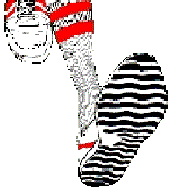I went for a run with a friend the other day. As soon as we got outside my front door, he turned to me, and said, “Ready?”
and took off at Mach 4. I stood there dumbfounded, waiting until he turned to see that I wasn’t beside him.
“What?” he asked.
“Aren’t we going to warm-up?” I responded.
“Warm-up?” he said with a quizzical look, suddenly reminding me of the injuries that continually plagued him.
Warming up, cooling down, and stretching are unfortunately regarded as the exercise equivalent of going to the dentist; everyone knows that they should do it, but most make excuses not to. And yet a full 70-80% of all injuries could be prevented if people just took those extra five minutes to ease their bodies into and out of a workout.
The main reason for warming up and cooling down is circulatory. Particularly in women, most of their blood centers in the abdomen when the body is at rest. That helps protect a fetus (if there is one,) and explains why women tend to have cooler hands and feet. A five-minute warm-up enables your body to shuttle the blood gradually from the abdomen to the extremities, getting more oxygen to the larger muscles so that when you start to exercise in earnest, the muscle cells have some fuel to burn. It’s the same principle as letting your car run for a minute or two before you start driving; it’s better to give the engine some time to warm-up, and the car will last longer. Your body works the same way.
When you cool-down, the physical process works in reverse. The blood starts to shift back to the abdomen as you decelerate, and the muscles relax as the demand on them eases off. You would never make a habit of slamming on the brakes when your car was holding steady at 60mph. You can’t expect your body to adapt to rapid, jarring changes either. For the warm-up, a gradual five-minute increase in intensity level is usually sufficient to get your body adjusted. If you plan on walking or running, start walking slowly, and speed up gradually until you hit your stride. For swimming, try a few laps of breast-stroke, then ease into the crawl. Whatever form of exercise you’re doing, start the motion and gradually build until your heart rate is in the correct zone.
As far as stretching goes, I cannot emphasize this enough: stretch each and every time that you exercise. It’s a good idea to do some light stretching after the initial warm-up, never before, because cold muscles tear easily. The critical stretching period is at the end. Spend five-ten minutes stretching whatever muscles were worked, breathing deeply and relaxing into a held stretch. Never bounce or strain to stretch further- everyone has a different level of natural flexibility, and pushing past that point can result in tears or strains.
In the legs, spend extra time stretching out the hamstrings, quadriceps, and calves, holding each stretch for 10 slow seconds while breathing in through your nose, out through your mouth. Bend the knee to stretch your Achilles tendon, a commonly injured area.
While lying on the floor, stretch out the lower back and the abdominals, and spend a few minutes stretching out your shoulders and your neck if you get a chance, releasing some of the tension that exercise (and daily life) can exacerbate.
As a former modern dancer, I always have a hard time understanding people’s reluctance to stretch. It is one of my favorite times of day, where I spend ten minutes just focusing on the movement of my breath in and out of my lungs, the muscles releasing and relaxing as I reach for my toes, feeling that lengthening all the way through to the fascia. Try to look at stretching as a few valuable minutes that you spend each day communicating with your body.
Spend more time on sore areas, and regard it as part meditation, part exercise. Yoga can help loosen up muscles and teach breathing techniques that are valuable not only in exercise, but in managing the stresses that constantly besiege us.
Warming-up, cooling down, and stretching will enable you to enjoy a better relationship with your body and will insure that you can pursue a lifetime of fitness. Because in life, you only get one vehicle, and it deserves the best care and maintenance that you can provide.
The American Council on Exercise (ACE) can help you to find an ACE
certified trainer in your area. They can be contacted at either
www.acefitness.org, or by calling 1.800.825.3636.
http://www.walkablock.com


